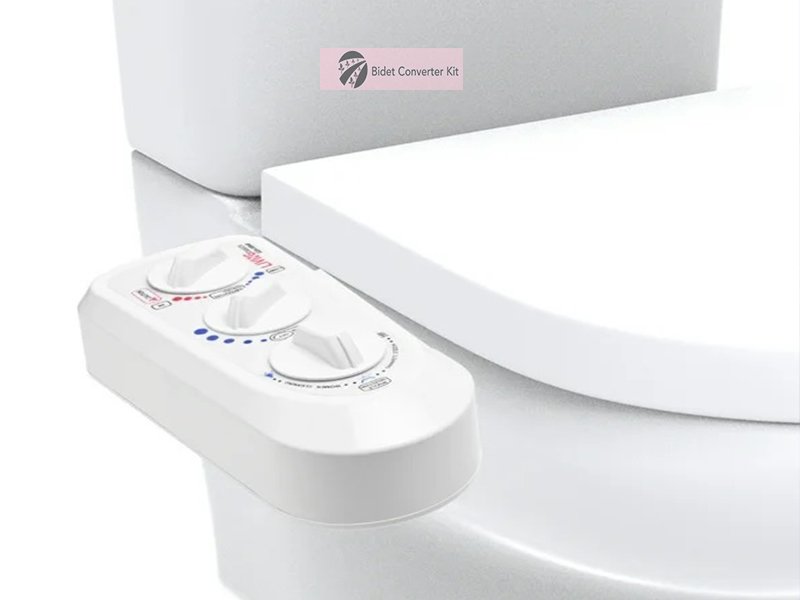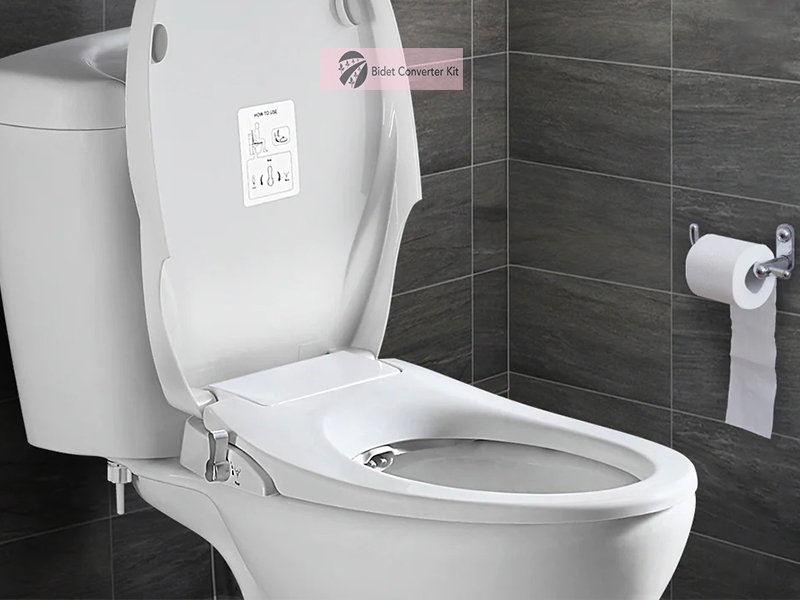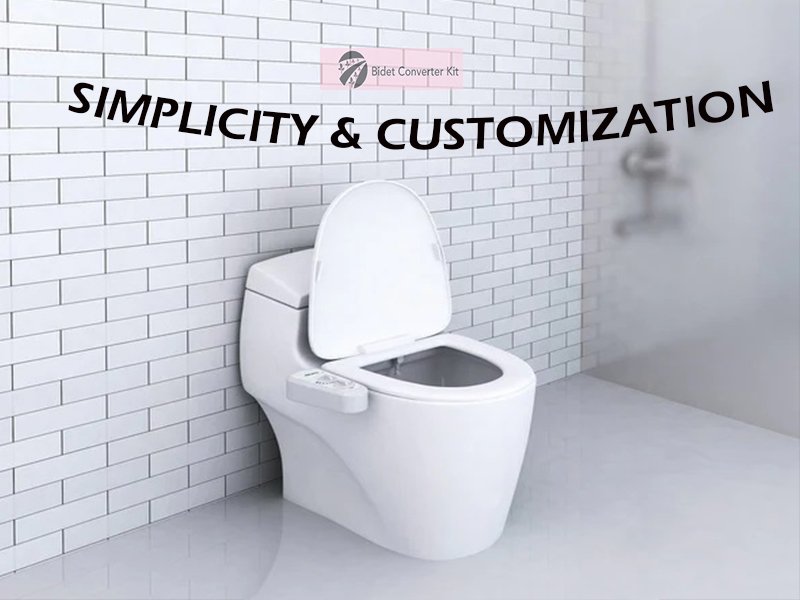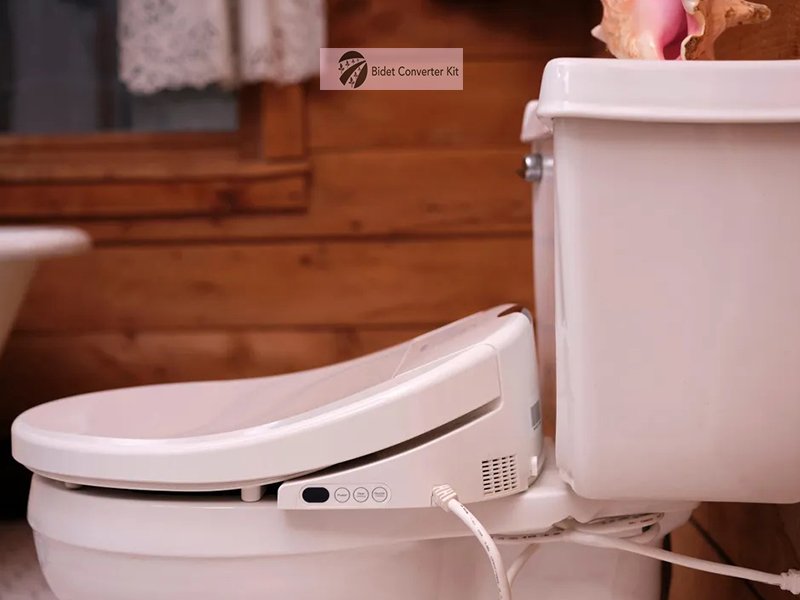Bidets have emerged as a focal point in the realm of bathroom hygiene, presenting a superior and more invigorating alternative to traditional toilet paper. As individuals venture into the bidet experience, a crucial decision awaits and that is the choice between electric and non-electric bidet models.
In this blog, we will look closely at both choices, showing what makes them different. Whether you opt for the sophistication of electric bidets with customizable settings or the simplicity of non-electric attachments, this journey promises a cleaner, greener, and more comfortable approach to personal hygiene.
It’s time to unravel the bidet conundrum and embark on a bathroom experience that transcends the ordinary, ensuring a refreshing and elevated routine for a cleaner and more sustainable lifestyle.
Electric Comfort
Electric bidets, deemed the luxurious choice, boast an array of features that elevate the bathroom experience. With adjustable water temperature, customizable pressure settings, and indulgent additions like heated seats and air drying, these bidets epitomize sophistication.
The integration of electrical components not only enhances functionality but also transforms the mundane act of using the bathroom into a spa-like indulgence. The allure of electric bidets lies in their ability to cater to personal preferences, offering a personalized and comfortable cleansing experience.
While they may come with a higher price tag, the investment in electric elegance translates to a daily routine that goes beyond mere hygiene, providing a touch of opulence and modernity to your bathroom retreat.

Non-Electric Simplicity
Non-electric bidets embody simplicity, offering a straightforward alternative on the opposite end of the spectrum. These attachments are typically uncomplicated to install, relying on the water pressure from existing plumbing systems.
Although they lack the advanced features of their electric counterparts, non-electric bidets efficiently fulfill their primary purpose. Their appeal lies in their no-frills approach, providing an effective and minimalist cleansing experience.
While they might not boast the luxurious extras, non-electric bidets prioritize functionality, making them an attractive option for those seeking a basic and reliable bidet solution without the complexities associated with electrical components.

Installation Ease
Non-electric bidet attachments shine in terms of installation ease, making them a user friendly option that demands minimal effort. Connecting directly to the existing water supply without the need for an electrical outlet, these bidets are straightforward to set up.
On the other hand, electric bidets, though not excessively complex, might entail a bit more installation work due to their reliance on a power source.
The simplicity of non-electric bidet installations makes them an accessible choice for those who prefer a hassle-free upgrade to their bathroom routine without the need for intricate setup procedures. It is a practical solution that emphasizes user convenience.
Also Read - How A Non Electric Bidet Works?
Cost of Bidet
When it comes to cost considerations, non-electric bidets emerge as the frontrunners in the budget battle. Their affordability makes them an appealing choice, especially for individuals seeking to venture into the bidet experience without a significant financial commitment.
On the other hand, electric bidets, enriched with additional features, often carry a higher price tag. While the enhanced functionalities may justify the cost for some, non-electric bidets stand out as a pragmatic and cost-effective option, aligning with the preferences of those who value simplicity and economy.
This cost-conscious approach to bidet selection ensures that upgrading to a cleaner and more comfortable bathroom routine remains accessible to a broader audience, emphasizing the versatility of bidets in catering to varying budget constraints.
Customization vs. Simplicity
The distinction between electric and non-electric bidets lies in the balance between customization and simplicity. Electric bidets take the spotlight in customization, offering a plethora of adjustable settings. From temperature to pressure and additional features like heated seats, they cater to individual preferences, delivering a personalized and indulgent cleansing experience.
On the other side, non-electric bidets, while foregoing advanced features, excel in simplicity. They offer a direct and effective cleansing experience without the complexities of customization.
This duality reflects a choice between a high-tech, tailored approach and a straightforward, no-frills solution, allowing users to prioritize their preference for either advanced functionality or a minimalist yet efficient bidet experience.

Eco-Friendly Perspective
Non-electric bidets are inherently more environmentally friendly, consuming less energy and boasting a lower overall environmental impact. Their simplicity aligns with a greener ethos, contributing to sustainability by minimizing resource consumption.
On the other hand, electric bidets, while providing a luxurious and feature-rich experience, contribute more significantly to electricity consumption.
This environmental consideration emphasizes the trade-off between enhanced functionalities and a reduced ecological footprint. For those with a keen eye on minimizing their environmental impact, the choice between electric and non-electric bidets becomes pivotal, highlighting the importance of balancing personal comfort with eco-conscious decision-making in the pursuit of a cleaner and greener bathroom routine.
Advantages and Disadvantages of Electric Bidet
Advantages
Customization: Electric bidets offer a range of customizable features such as adjustable water temperature, pressure, and nozzle positions, providing a personalized and comfortable cleansing experience.
Additional Features: They often come with extra features like heated seats, warm air dryers, and built-in deodorizers, enhancing overall bathroom comfort and hygiene.
Luxurious Experience: Electric bidets provide a spa-like experience, bringing a touch of luxury to the bathroom routine.
Enhanced Cleaning: The adjustable settings and added features contribute to a more thorough and efficient cleaning process, promoting better personal hygiene.
Disadvantages
Higher Cost: Electric bidets are generally more expensive than non-electric options, which might be a deterrent for budget-conscious individuals.
Installation Complexity: They may require a power source and involve more intricate installation compared to non-electric bidets, potentially necessitating professional assistance.
Electricity Consumption: The added features contribute to higher electricity consumption, impacting both energy bills and the environment.
Dependency on Power: In the event of a power outage, electric bidets may become temporarily inactive, limiting their functionality.

Advantages and Disadvantages of Non- Electric Bidet
Advantages
Affordability: Non-electric bidets are generally more budget-friendly, making them a cost-effective option for those seeking a simple bidet solution without breaking the bank.
Simplicity: Installation and operation of non-electric bidets are straightforward, often requiring minimal setup and making them more user-friendly.
Energy Efficiency: Non-electric bidets do not rely on electricity, resulting in lower energy consumption and a reduced environmental impact.
Reliability: As they don’t have electrical components, non-electric bidets are less prone to technical malfunctions, offering a reliable and durable option.
Disadvantages
Limited Features: Non-electric bidets lack advanced features such as adjustable water temperature and heated seats, providing a more basic cleansing experience.
Less Customization: Users have limited control over settings, and the bidet may not cater to individual preferences as much as electric options.
Fewer Luxuries: Non-electric bidets do not offer some of the luxurious extras like warm air dryers and deodorizers that electric bidets may have.
Dependency on Water Pressure: The effectiveness of non-electric bidets is dependent on the water pressure in the plumbing system, which may vary in different locations.
FAQ
What is the main difference between electric and non-electric bidets?
The primary difference lies in their functionality. Electric bidets come with additional features like adjustable water temperature, heated seats, and customizable settings, while non-electric bidets offer a simpler, water-pressure-based cleansing experience.
Is the installation of an electric bidet more complex than a non-electric one?
Yes, electric bidets may require a power source, which can add complexity to the installation process. Non-electric bidets are typically simpler to install.
Can I use an electric bidet during a power outage?
No, electric bidets rely on power, and during an outage, they may be temporarily inactive. Non-electric bidets, being water-pressure-based, remain functional.
Are electric bidets more comfortable than non-electric ones?
Yes, electric bidets offer added comforts like heated seats and adjustable settings, providing a more luxurious experience compared to the non-electric bidets.
Can I install a bidet on my existing toilet for both types?
Yes, both electric and non-electric bidets often come in attachment forms that can be installed on existing toilets, enhancing their functionality.
Can children and the elderly use both types of bidets?
Yes, both electric and non-electric bidets can be adapted for users of all ages. Many models have features like soft-closing lids and adjustable settings for enhanced accessibility.
Conclusion
Deciding between electric and non-electric bidets is a matter of aligning with your personal preferences, considering your budget, and determining the level of sophistication you crave in your bathroom. Whether you lean towards the advanced features of an electric bidet or prefer the straightforwardness of a non-electric attachment, both choices signal a move towards a more hygienic, environmentally conscious, and comfortable bathroom routine.
The key lies in striking a balance that complements your needs, enhancing your daily hygiene experience. Regardless of your choice, embracing the bidet experience promises a positive shift in your bathroom habits, fostering cleanliness, sustainability, and heightened comfort.
